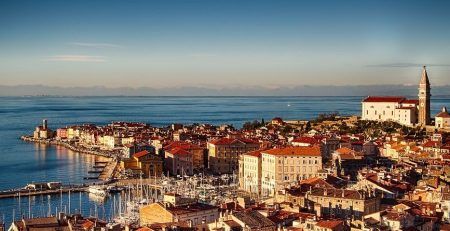From the 1st of January 2018 more funds are available for child benefit in Slovenia. Child benefit in Slovenia was introduced by the Public Finance Balance Act (ZUJF). The child benefit will be reintroduced in the 7th and 8th income class. That means that additional 45.000 children in Slovenia will receive child benefit.
The child benefit is a complementary income for the child’s subsistence, upbringing, and education. It’s one of the social transfers. In this moment 249.000 children receive child support and the average amount is 76 euros per child, according to the Ministry of Labor, Family, Social Affairs and Equal Opportunities (MDDSZ).
How to determine the amount for child benefit?
The amount of the child allowance is determined according to the family classification in the income class, which is determined as a percentage of the average monthly salary of all employees in Slovenia for the calendar year prior to the submission of the request.
Are you thinking about moving to Slovenia? Read more it in this article: Immigration to Slovenia.
The amount of child benefit for a child until the end of the primary school or up to the age of 18 (in euros)
| Income class | Average monthly income per person (in %) | First child | Second child | Third or more children |
|---|---|---|---|---|
| 1 | Up to 18 % | 114,31 | 125,73 | 137,18 |
| 2 | Above 18 % up to 30 % | 97,73 | 108,04 | 118,28 |
| 3 | Above 30 % up to 36 % | 74,48 | 83,25 | 91,98 |
| 4 | Above 36 % up to 42 % | 58,75 | 67,03 | 75,47 |
| 5 | Above 42% up to 53 % | 48,04 | 56,06 | 64,03 |
| 6a | Above 53 % up to 56 % | 30,44 | 38,10 | 45,71 |
| 6b | Above 56 % up to 64 % | 30,44 | 38,10 | 45,71 |
| 7 | Above 64% (659,3€) up to 82% (844,73 €) | 22,83 | 30,44 | 38,10 |
| 8 | Above 82% (844,73 €) up to 99% (1.019,86 €) | 19,88 | 27,50 | 35,11 |
Amount of child benefit for a child in high school, but not exceeding 18 years old (in euros)
| Income class | Average monthly income per person (in %) | First child | Second child | Third or more children |
|---|---|---|---|---|
| 1 | Up to 18 % | 114,31 | 125,73 | 137,18 |
| 2 | Above 18 % up to 30 % | 97,73 | 108,04 | 118,28 |
| 3 | Above 30 % up to 36 % | 74,48 | 83,25 | 91,98 |
| 4 | Above 36 % up to 42 % | 58,75 | 67,03 | 75,47 |
| 5 | Above 42% up to 53 % | 48,04 | 56,06 | 64,03 |
| 6a | Above 53 % up to 56 % | 30,44 | 38,10 | 45,71 |
| 6b | Above 56 % up to 64 % | 43,44 | 51,10 | 71,17 |
| 7 | Above 64% (659,3€) up to 82% (844,73 €) | 28,83 | 36,44 | 49,65 |
| 8 | Above 82% (844,73 €) up to 99% (1.019,86 €) | 22,88 | 30,50 | 39,89 |
The Ministry gives the following two examples of children’s allowances in the 7th and 8th income class.
- Two parents with one child:
If the parents earn between € 1,998 and € 2,534, they fall into the 7th income class. If they together earn between € 2,534 and € 3,060, they are classified in the 8th income class. - Two parents with two children:
If the parents together earn between € 2,637 and € 3,379, they are classified in the 7th income class. If they together earn between € 3,379 and € 4,079, they are classified in the 8th income class.
Other measures to improve the situation of families
In 2017, the child benefit for all children in the 5th and 6th income class was the same as before the enforcement of austerity measures. Some kids also receive subsidy for snacks and lunches. With the entry into force of the new Act (ZUPJS-C), the child allowance as income for the following rights and subsidies is not counted in full, but reduced by 20% of the amount. In the coming year, fathers will also be entitled to a total of 30 days of paternity leave with paternity compensation.
How to receive a child benefit?
You claim the right to child benefit at the Center of Social Work where you have your permanent residence. You claim the right with a single application for exercising rights from public funds.
Contact us!
If you want to move Slovenia and register a company here, write us to the e-mail data@data.si or call us at tel. number 00 386 1 6006 270 or Viber 00 386 40 530 718. We also suggest you visit our Facebook page.














Leave a Reply
You must be logged in to post a comment.